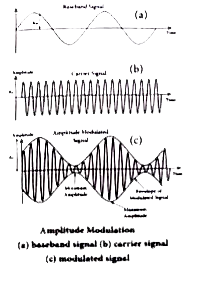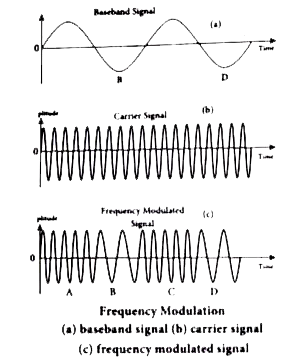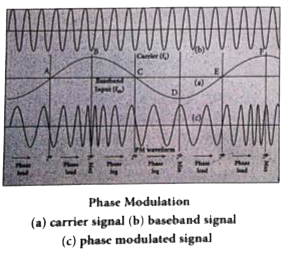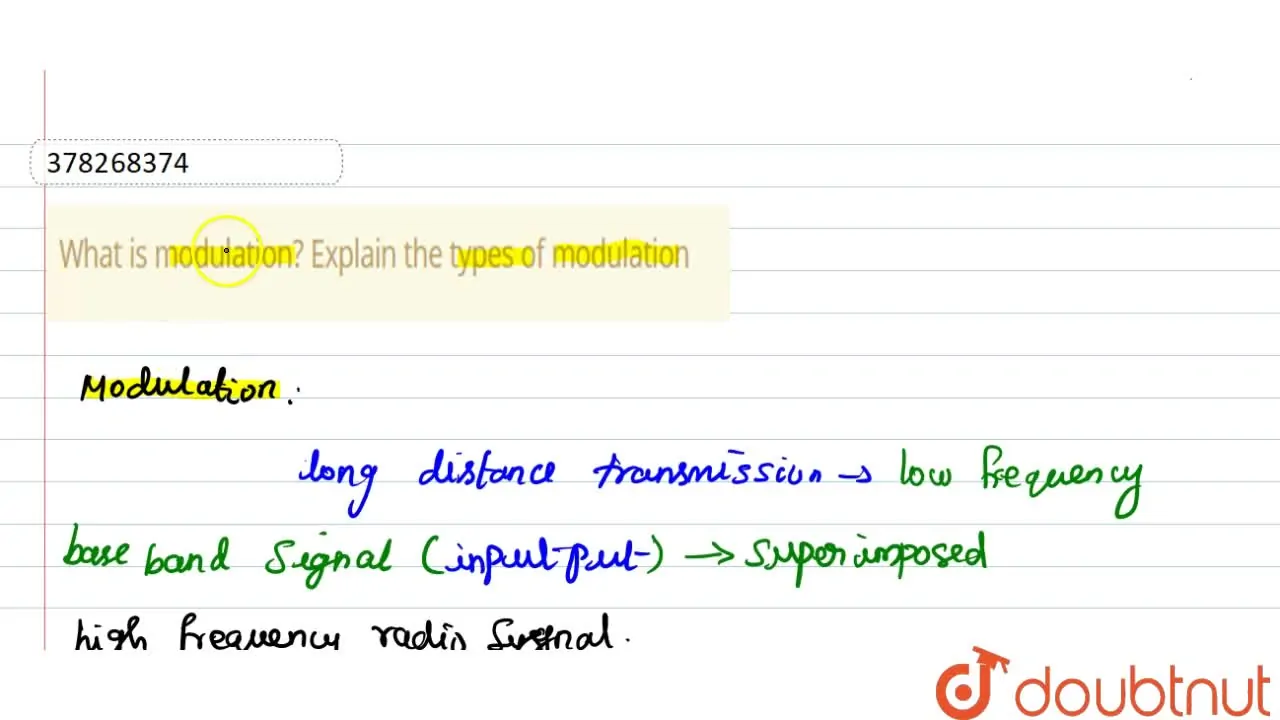What is modulation? Explain the types of modulation Solution in Tamil
Video Solution
Text Solution
For long distance transmission, the low frequency baseband signal (input signal) is superimposed onto a high frequency radio signal by a process called modulation. There are 3 types of modulation based on which parameter is modified. They are (a) amplitude modulation, (b) frequency modulation, and (c) phase modulation.

(a) Amplitude Modulation If the amplitude of the carrier signal is modified according to the instantaneous amplitude of the baseband signal, then it is called amplitude modulation. Here the frequency and the phase of the carrier signal remain constant. Amplitude modulation is used in radio and TV broadcasting
(b) Frequency modulation
(i) The frequency of the carrier signal is modified according to the instantaneous amplitude of the baseband signal in frequency modulation.
(ii) Here the amplitude and the phase of the carrier signal remain constant. Increase in the amplitude of the baseband signal increases the frequency of the carrier signal and vice versa.
(iii) This leads to compressions and rarefactions in the frequency spectrum of the modulated wave. Louder signal leads to compressions and relatively weaker signals to rarefactions.
(iv) When the amplitude of the baseband signal is zero in Figure (a), the frequency of the modulated signal is the same as the carrier signal.
(v) The frequency of the modulated wave increases when the amplitude of the baseband signal increases in the positive direction (A,C).
(vi) The increase in amplitude in the negative half cycle (B, D) reduces the frequency of the modulated wave (Figure (c)).

(c) Phase Modulation (PM)
(i) The instantaneous amplitude of the baseband signal modifies the phase of the carrier signal keeping the amplitude and frequency constant is called phase modulation. Thismodulation is used to generate frequency modulated signals.
(ii) The carrier phase changes according to increase or decrease in the amplitude of the baseband signals.

(iii) When the modulating signal goes positive, the amount of phase lead increases with the amplitude of the modulating signal.
(iv) Due to this, the carrier signal is compressed or its frequency is increased.
(v) The negative half cycle of the baseband signal produces a phase lag in the carrier signal.
(vi) When the signal voltage is zero (A, C and E) the carrier frequency is unchanged.
(vii) The frequency shift depends on
(i) amplitude of the modulating signal and
(ii) the frequency of the signal.
|
Updated on:21/07/2023
Similar Questions
What is modulation? Explain the types of modulation with necessary diagrams.
08:28View SolutionWhat is modulation? Explain the types of modulation with necessary diagrams.
06:59View SolutionWhat is modulation? Explain the types of modulation with necessary diagrams.
08:28View SolutionWhat is modulation? Explain the types of modulation with necessary diagrams.
08:28View SolutionWhat is modulation ? Explain different types of modulation.
View SolutionWhat is modulation? What are its types?
02:50View SolutionWhat is Modulation ? Explain in brief.
02:33View Solution


